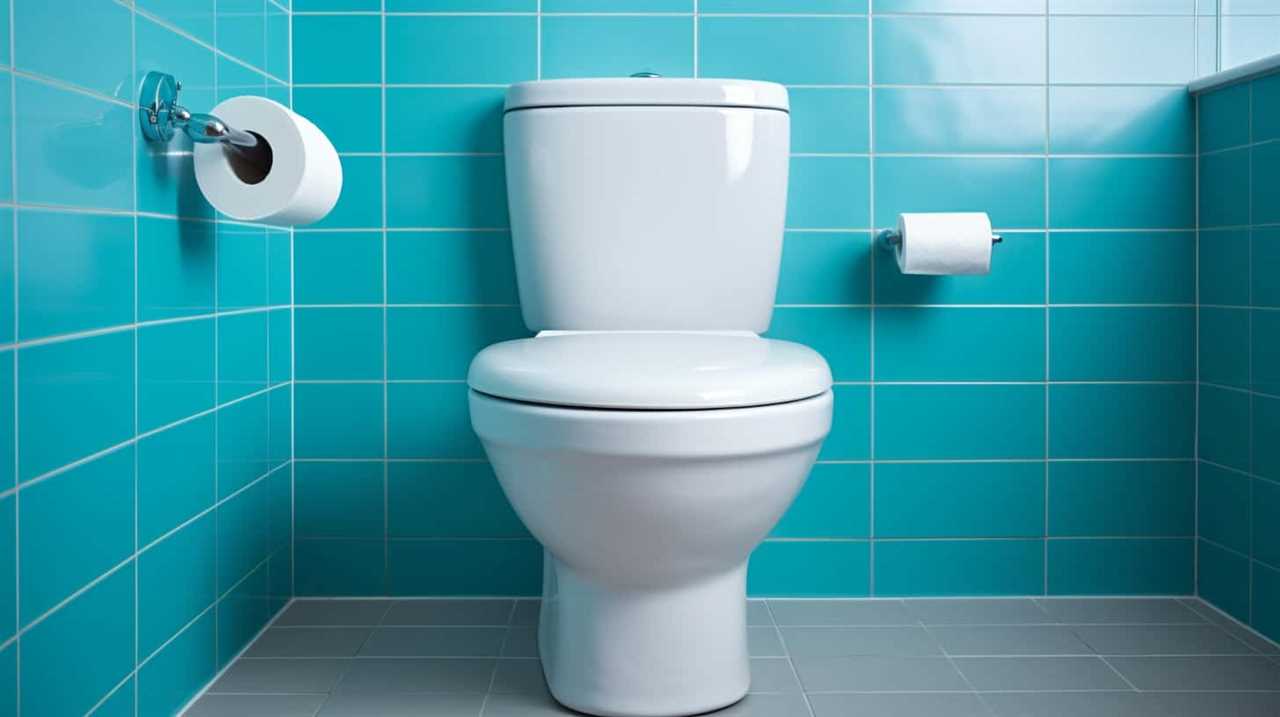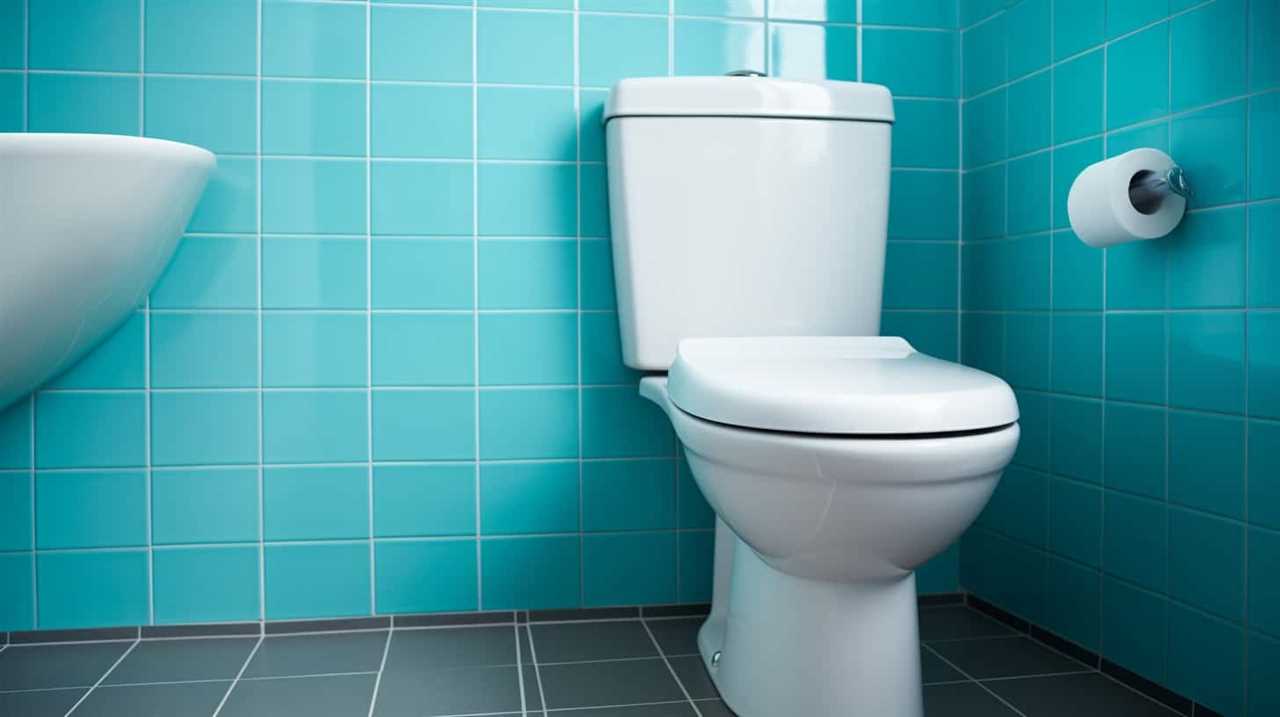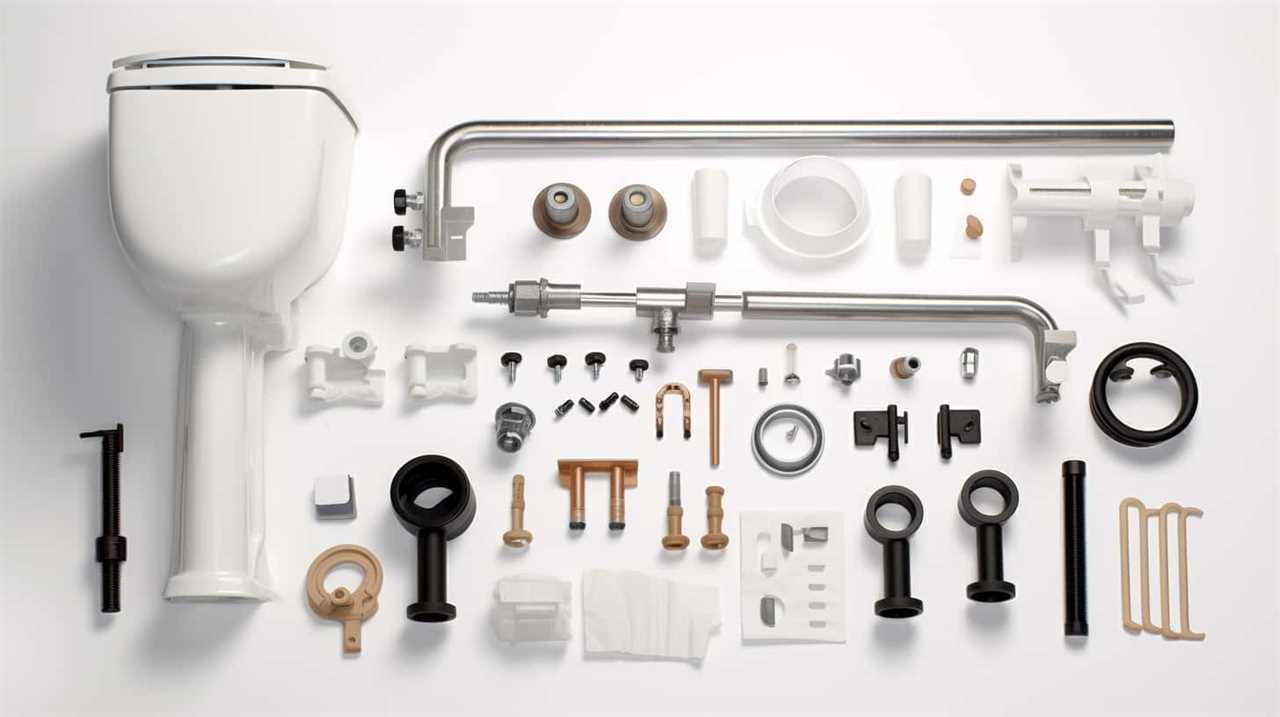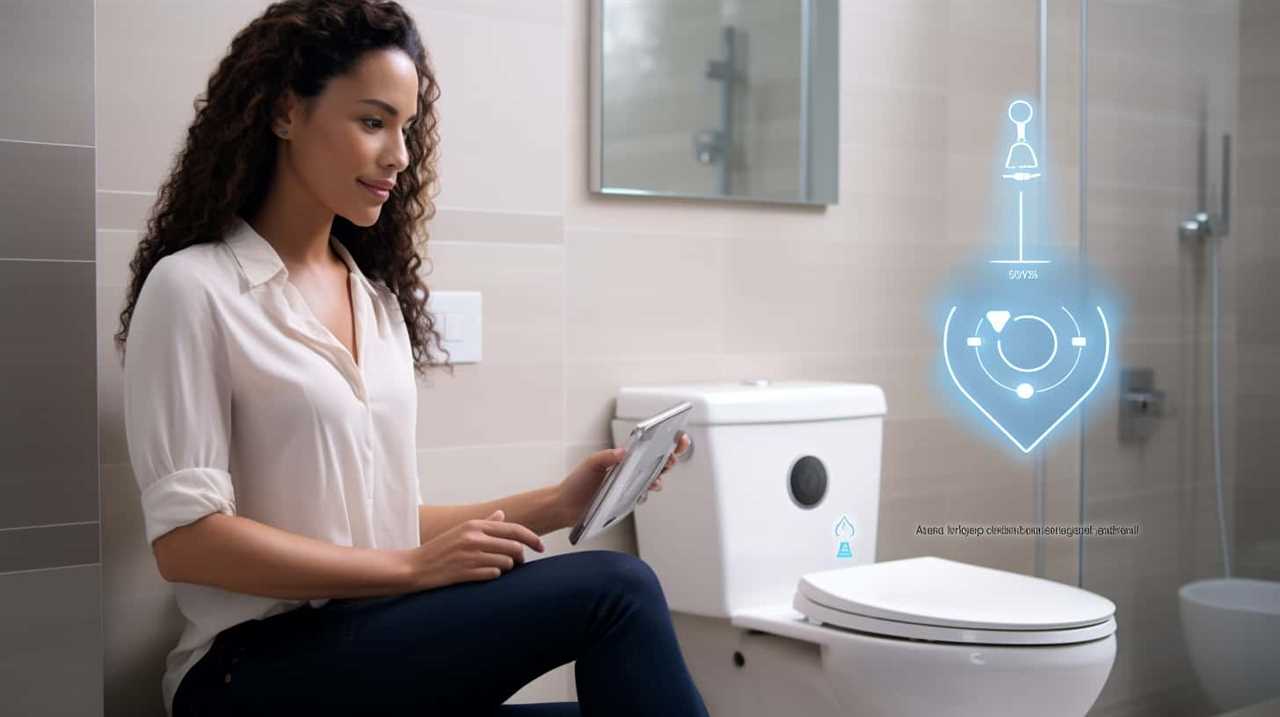Ever thought about what makes one toilet superior in flushing strength compared to another? We’re here to uncover the truth behind this enigmatic bathroom question.
In this article, we’ll delve into the technical details of what makes a toilet flush better than its counterparts. From water pressure and flow rate to bowl shape and design, we’ll explore the key factors that contribute to a toilet’s superior flushing performance.
Get ready to master the art of a perfect flush!
Key Takeaways
- Higher water pressure and flow rate result in a more forceful and thorough flush.
- The shape and design of the bowl determine the flushing power and rim cleaning effectiveness.
- The flush handle should be easily accessible and require minimal effort to activate for optimal efficiency.
- An optimized trapway design and size allow for a more efficient flush, reducing residue and noise.
Water Pressure and Flow Rate
When considering the factors that contribute to a toilet’s flushing performance, one can’t overlook the significant role that water pressure and flow rate play in ensuring an efficient and effective flush. The optimization of toilet water usage depends heavily on these two factors.

Water pressure refers to the force exerted by the water as it flows through the pipes and into the toilet bowl. Higher water pressure results in a more forceful and thorough flush, effectively removing waste with minimal effort.
On the other hand, flow rate refers to the amount of water that’s released per unit of time. A higher flow rate allows for a faster and more powerful flush, while a lower flow rate may require multiple flushes to achieve the same level of effectiveness.
Therefore, it’s crucial to consider both water pressure and flow rate when aiming for an optimal flushing experience.
Bowl Shape and Design
One major factor that contributes to the effectiveness of a toilet flush is the shape and design of the bowl. The bowl shape and design determine the flushing power and rim cleaning effectiveness of the toilet. A well-designed bowl can maximize the force of the water flow, resulting in a more efficient flush. Additionally, the shape of the bowl affects how effectively the water reaches and cleans the rim. A curved or contoured bowl can help to ensure that the water reaches all areas of the rim, effectively removing any residue or debris.
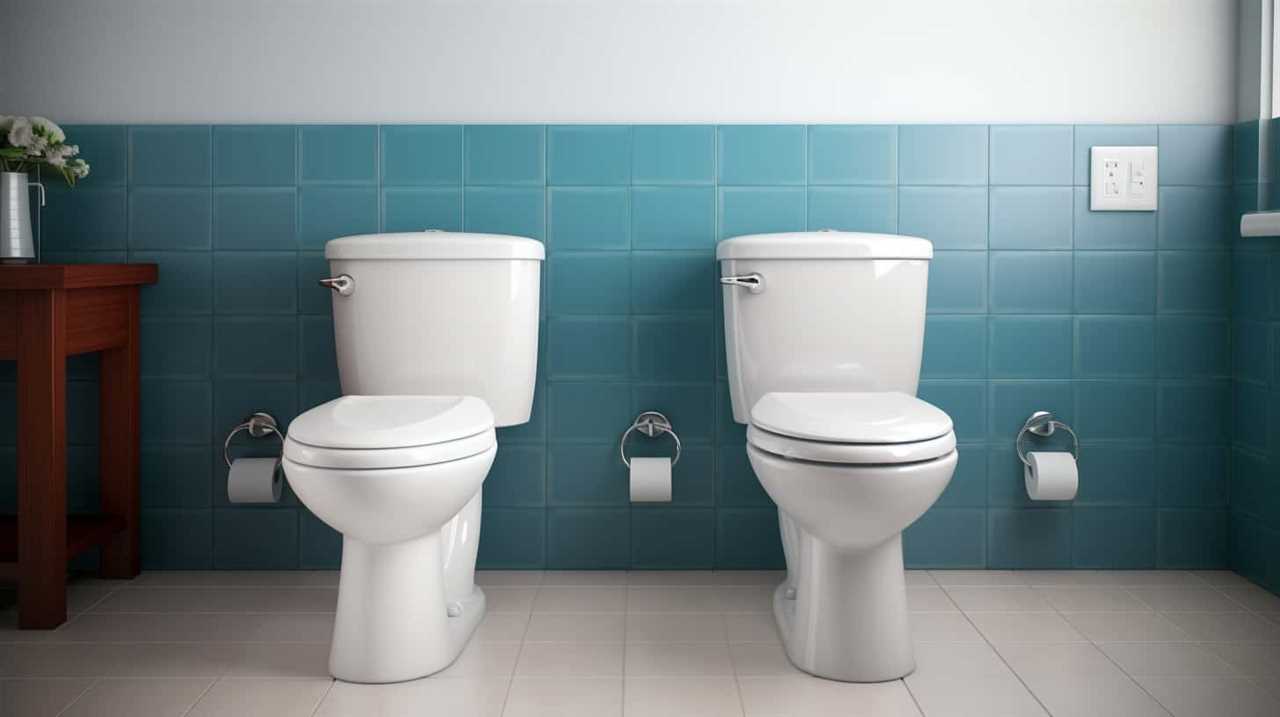
To further illustrate the importance of bowl shape and design, let’s consider the following table:
| Bowl Shape | Flushing Power | Rim Cleaning Effectiveness |
|---|---|---|
| Round | Average | Average |
| Elongated | High | High |
| Compact | Low | Low |
As shown in the table, an elongated bowl shape generally offers higher flushing power and rim cleaning effectiveness compared to a round or compact bowl shape. Therefore, when choosing a toilet, it is crucial to consider the shape and design of the bowl to ensure optimal flushing performance.
Flush Mechanism Efficiency
Now let’s delve into the subtopic of flush mechanism efficiency, which plays a crucial role in determining the effectiveness of a toilet flush. To achieve optimal flush mechanism efficiency, two key factors must be considered: flush handle placement and water usage optimization.
- Flush handle placement: The location of the flush handle on a toilet can impact the efficiency of the flush. Ideally, the handle should be easily accessible and require minimal effort to activate. This ensures that the user can initiate a flush without any difficulties, leading to a more efficient and timely evacuation of waste.
- Water usage optimization: Another important aspect of flush mechanism efficiency is the amount of water used during each flush. To maximize efficiency, toilets should be designed to use the minimum amount of water necessary to effectively remove waste. This not only reduces water consumption but also contributes to environmental sustainability.
Trapway Size and Design
Toilet trapway size and design significantly impact the efficiency of a flush. The trapway is the channel through which waste is carried from the bowl to the drainage system. A wider and smoother trapway allows for a more efficient and powerful flush, reducing the chances of clogs and blockages.

Additionally, an optimized trapway design contributes to toilet bowl cleanliness by ensuring that waste is effectively flushed away, leaving no residue behind. The size and design of the trapway also play a role in noise reduction during flushing.
A properly designed trapway minimizes turbulence and prevents the formation of air pockets, resulting in a quieter flush. When selecting a toilet, it’s important to consider trapway size and design to ensure optimal performance in terms of efficiency, cleanliness, and noise level.
Flapper or Flush Valve Performance
Moving on from trapway size and design, we can now delve into the performance of the flapper or flush valve, which greatly influences the effectiveness of a toilet flush. The flapper or flush valve is responsible for controlling the release of water from the tank into the bowl during a flush.
Here are some key factors to consider regarding flapper or flush valve performance:
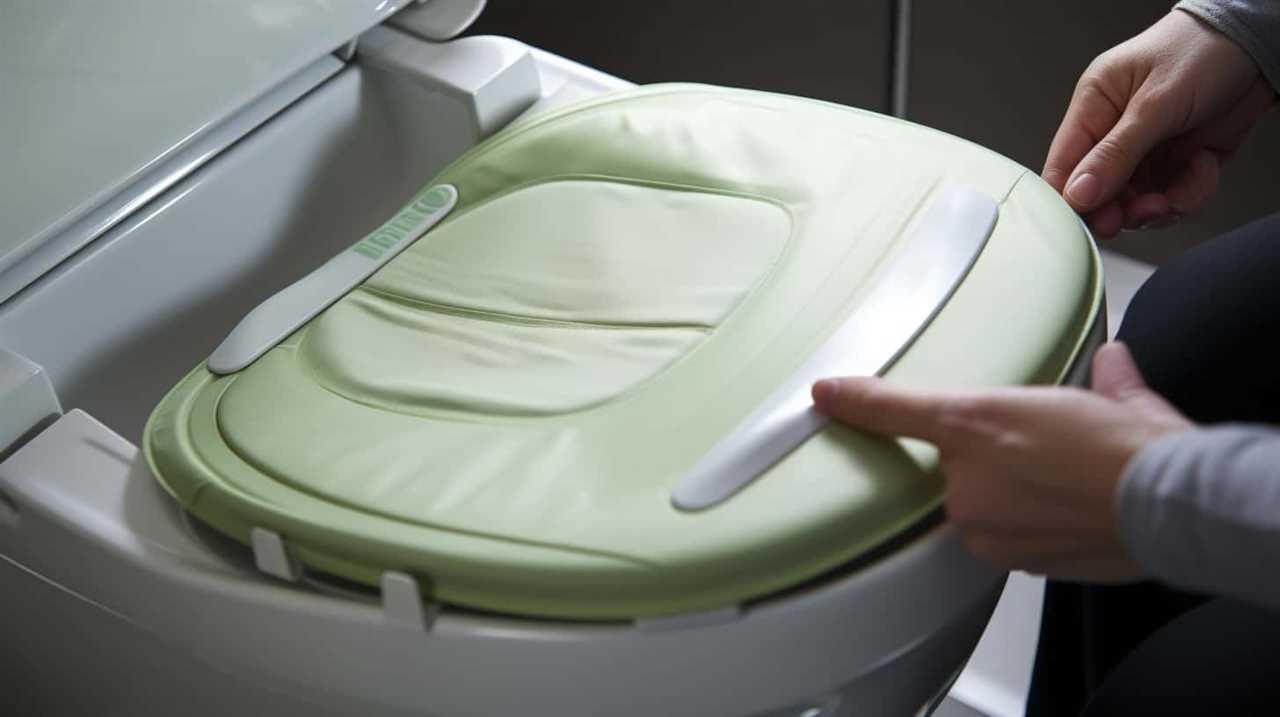
- Flapper maintenance:
- Regular inspection and cleaning of the flapper is essential to ensure proper sealing and prevent leaks.
- Replace the flapper if it becomes damaged or worn out to maintain optimal performance.
- Adjust the chain length connecting the flapper to the flush handle to ensure a smooth and complete flush.
- Flush valve material:
- The material used for the flush valve can impact its durability and longevity.
- Opt for a flush valve made of corrosion-resistant materials like brass or stainless steel for enhanced reliability.
- Avoid flappers made of cheap plastic, as they may deteriorate quickly and lead to frequent repairs or replacements.
Frequently Asked Questions
How Does the Toilet’s Water Pressure and Flow Rate Affect Its Flushing Performance?
The toilet’s water pressure and flow rate directly affect its flushing performance. These factors determine how effectively the water can clear the bowl, with higher pressure and flow rate resulting in better flushing performance.
What Factors Should Be Considered When Choosing a Toilet Bowl Shape and Design for Optimal Flushing Efficiency?
When choosing a toilet bowl shape and design for optimal flushing efficiency, factors such as toilet bowl materials and toilet seat design should be considered. These elements greatly impact the overall performance of the flush.
How Does the Flush Mechanism Efficiency Impact the Overall Performance of a Toilet?
The flush mechanism efficiency of a toilet is crucial for optimal performance. Factors like toilet bowl materials and water level have a significant impact on flushing efficiency, ensuring a thorough and effective flush.
What Role Does the Trapway Size and Design Play in Determining a Toilet’s Flushing Capability?
The trapway size and design impact a toilet’s flushing capability. The material used in the trapway affects flushing performance. Additionally, the trap seal plays a crucial role in determining how well a toilet flushes.

How Does the Performance of the Flapper or Flush Valve Affect the Efficiency of a Toilet’s Flushing System?
The performance of the flapper and flush valve directly impact the efficiency of a toilet’s flushing system. A well-functioning flapper ensures a strong and complete flush, while an efficient flush valve controls the water flow for optimal flushing power.
Conclusion
After thoroughly examining the factors that contribute to the performance of a toilet flush, it’s clear that water pressure and flow rate, bowl shape and design, flush mechanism efficiency, trapway size and design, and flapper or flush valve performance all play crucial roles.
By considering these elements, one can ensure a superior flushing experience. So next time you’re in the market for a new toilet, remember that not all toilets are created equal.
Don’t settle for a ‘POT’entially disappointing flush, choose one that will leave you ‘BOWL’ed over with satisfaction.
